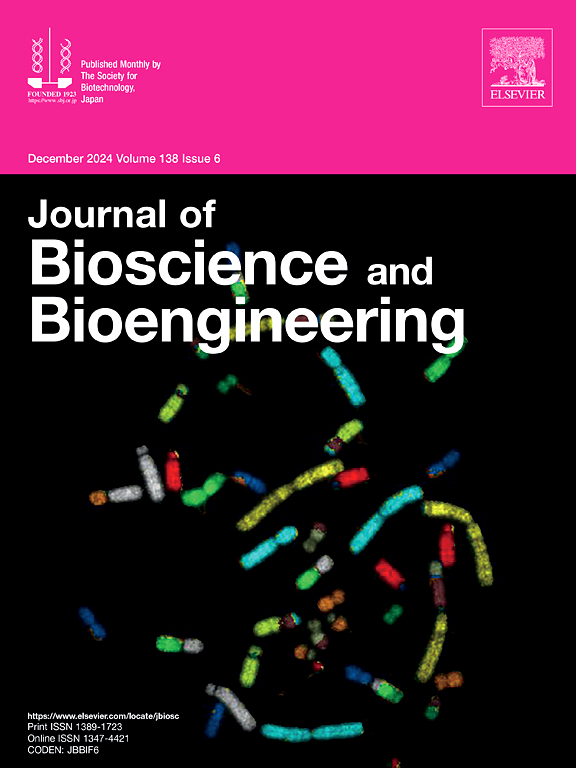Aromatic residues in the oligonucleotide binding domain are essential to the function of the single-stranded DNA binding protein of Helicobacter pylori
IF 2.3
4区 生物学
Q3 BIOTECHNOLOGY & APPLIED MICROBIOLOGY
引用次数: 0
Abstract
Single-stranded DNA-binding protein (SSB) is essential to DNA replication, DNA repair, and homologous genetic recombination. Our previous study on the crystal structure of a C-terminally truncated SSB from Helicobacter pylori, HpSSBc, in complex with single-stranded DNA (ssDNA) suggests that several aromatic residues, including Phe37, Phe50, Phe56, and Trp84, were involved in ssDNA binding. To investigate the importance of these aromatic residues, the binding activity of four site-directed HpSSB mutants, including F37A HpSSB, F50A HpSSB, F56A HpSSB, and W84A HpSSB, was compared to that of wild-type HpSSB and HpSSBc by means of electrophoresis mobility shift assay (EMSA), tryptophan quenching fluorescence titration, and surface plasmon resonance (SPR). Molecular docking and molecular dynamic (MD) simulation of a F37A and a quadruple mutation model of HpSSBc support that the ssDNA-HpSSBc complex was destabilized when either one or four of the aromatic residues were mutated. The findings of this study suggest that mutation of the phenylalanine and tryptophan residues within the oligonucleotide-binding domain significantly diminished the ssDNA binding capability of HpSSB, highlighting the crucial role these aromatic residues play in the binding of ssDNA by HpSSB.
寡核苷酸结合域中的芳香残基对幽门螺旋杆菌单链 DNA 结合蛋白的功能至关重要。
单链 DNA 结合蛋白(SSB)对 DNA 复制、DNA 修复和同源基因重组至关重要。我们之前对幽门螺杆菌中一种 C 端截短的 SSB(HpSSBc)与单链 DNA(ssDNA)复合物的晶体结构进行的研究表明,包括 Phe37、Phe50、Phe56 和 Trp84 在内的几个芳香族残基参与了 ssDNA 的结合。为了研究这些芳香残基的重要性,研究人员通过电泳迁移分析(EMSA)、色氨酸淬灭荧光滴定和表面等离子体共振(SPR)等方法,比较了F37A HpSSB、F50A HpSSB、F56A HpSSB和W84A HpSSB等四个位点定向HpSSB突变体与野生型HpSSB和HpSSBc的结合活性。F37A 和四重突变 HpSSBc 模型的分子对接和分子动力学(MD)模拟结果表明,当一个或四个芳香残基发生突变时,ssDNA-HpSSBc 复合物会失去稳定性。本研究的结果表明,寡核苷酸结合结构域中苯丙氨酸和色氨酸残基的突变显著降低了 HpSSB 结合 ssDNA 的能力,突出了这些芳香残基在 HpSSB 结合 ssDNA 的过程中发挥的关键作用。
本文章由计算机程序翻译,如有差异,请以英文原文为准。
求助全文
约1分钟内获得全文
求助全文
来源期刊

Journal of bioscience and bioengineering
生物-生物工程与应用微生物
CiteScore
5.90
自引率
3.60%
发文量
144
审稿时长
51 days
期刊介绍:
The Journal of Bioscience and Bioengineering is a research journal publishing original full-length research papers, reviews, and Letters to the Editor. The Journal is devoted to the advancement and dissemination of knowledge concerning fermentation technology, biochemical engineering, food technology and microbiology.
 求助内容:
求助内容: 应助结果提醒方式:
应助结果提醒方式:


